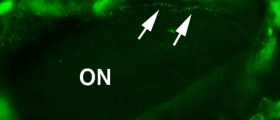
An ovarian cyst is any collection of fluid, surrounded by a very thin membrane, within an ovary. These follicles, larger than 2 centimeters, are termed as ovarian cysts. The cysts may vary in their size and shape. They can be as small as pea or as large as an orange. Many women have ovarian cysts at some point in their lives. They affect women of all ages, especially women in childbearing years. Mostly, ovarian cysts are completely harmless and they cause no problem to the woman. In some cases, however, they are the reason behind excessive vaginal bleeding and pain. Cysts larger than 5 cm in diameter are usually surgically removed to prevent any further complications.
Symptoms of ovarian cysts
Most women do not experience any symptoms at all until, after the cyst has ruptured. The symptoms may include dull aching, or severe, sudden and sharp pain or discomfort in the lower abdomen, the feeling of fullness, heaviness, pressure, swelling or bloating in the abdomen, breast tenderness, pain during or shortly after the beginning or the end of the menstrual period, irregular periods, change in frequency or ease of urination. Sometimes women may experience unusual weight gain, nausea or vomiting, fatigue or even infertility. Other symptoms which may indicate the presence of ovarian cysts are, an increased level of facial or body hair, strange pains in ribs and nodules that feel like bruises under the layer of skin.
Causes of ovarian cysts
Follicles, cyst-like structures filled with fluid, are normally produced each month. Follicles produce the hormones estrogen and progesterone and release an egg when you ovulate. Sometimes, however, the follicle keeps growing and becomes known as a functional cyst. The name functional cyst refers to any cyst that started during the normal function of a menstrual cycle. There are two known types of functional cysts: follicular cysts and corpus luteum cysts. A follicular cyst begins when the LH surge doesn't occur, which normally happens at the midpoint of the menstrual cycle, when the brain's pituitary gland releases a surge of luteinizing hormone. Corpus luteum cysts occurs when the LH does surge and the egg is released but the ruptured follicle begins producing large quantities of estrogen and progesterone in preparation for the conception. Sometimes, the egg seals off and fluid accumulates inside the follicle, causing the corpus luteum to expand into a cyst.
Treatment for ovarian cysts
The most important thing in the treatment of ovarian cysts is to include regular monitoring with ultrasound. Doctors may sometimes prescribe birth control pills to reduce the chance of new cysts developing in future menstrual cycles. Surgery is necessary for cysts larger than 5 cm.

















Your thoughts on this
Loading...